Table of Contents
[ad_1]
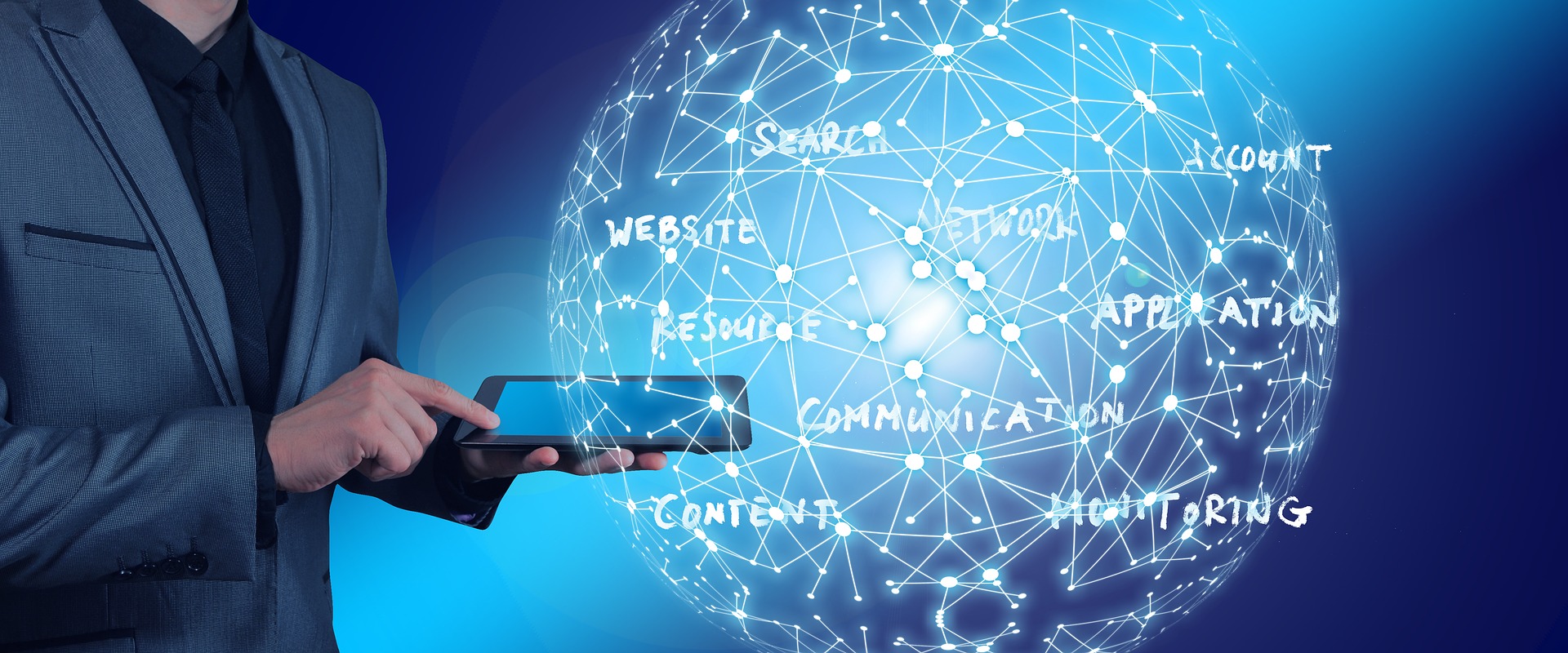
The Astonishing Begin and Success of your Preferred Technologies
In Component 1 of this series, we explored the humble beginnings of department stores, supermarkets, and the initially use of a bar code in a actual physical retailer. In Part 2, we expanded our innovation journey to ecommerce, smartphones, and robots. In Component 3, we shifted to loss prevention technologies some of which have develop into highly effective workhorses in retail outlet functions: dollars registers, CCTV cameras, and Digital Report Surveillance (EAS).
In this Portion 4, we offer some definite answers on the start out and adoption premiums of RFID, we search for more contactless responses with self-checkout, and we vacation on the Net and find more matters.
1st Use of RFID
The consensus is that the roots of radio frequency identification can be traced back to Entire world War 2. “The Germans, Japanese, People and British had been all utilizing radar—which had been identified in 1935 by Scottish physicist Sir Robert Alexander Watson-Watt—to alert of approaching planes although they had been however miles away.” The obstacle was determining the planes and no matter if they had been pals or foe.
“The Germans found that if pilots rolled their planes as they returned to base, it would improve the radio sign reflected again. This crude strategy alerted the radar crew on the floor that these were being German planes and not Allied aircraft (this is, basically, the first passive RFID process).”
In a top secret job, Watson-Watt formulated for the British the very first active identity close friend of foe (IFF) method. “They put a transmitter on every British airplane. When it received signals from radar stations on the ground, it started broadcasting a signal back that discovered the plane as helpful. RFID performs on this identical standard idea. A signal is despatched to a transponder, which wakes up and both displays back again a sign (passive method) or broadcasts a signal (energetic system).”
The to start with RFID patent was filed in 1973 by Mario W. Cardulla who invented an active RFID tag with memory that was rewritable. In the similar year, Charles Walton gained a patent for a passive RFID tag for a doorway locking process which became what we know now as a ‘Key Card System’.
As this collection largely focuses on the evolution of disruptive technologies in retail, fast ahead practically 80 many years because the close of Planet War II, and RFID is now getting to be ubiquitous to the industry. A 2021 review released by Accenture, labeled RFID adoption in retail as booming.
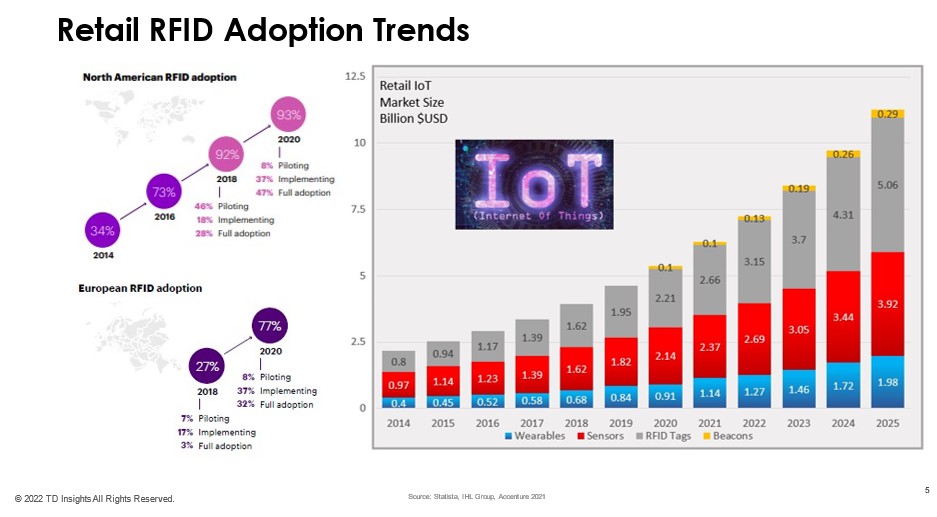
As the analyze pointed out, RFID adoption has increased substantially with Europe observing a 10x raise. The impetus of the growth in retail was clothing, but other sectors will significantly insert to the variety of merchandise that will be RFID tagged.
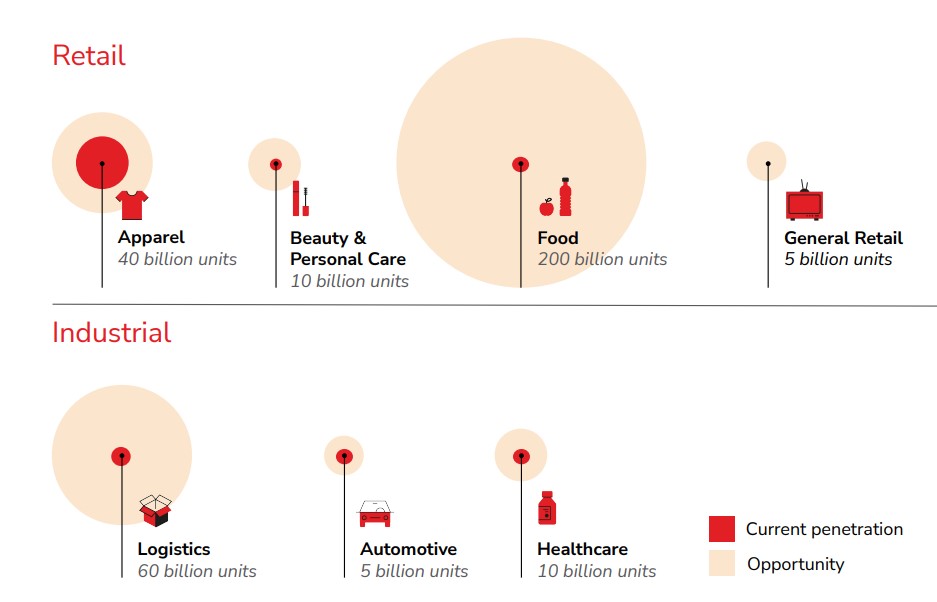
Very best use scenario for retail, specially all through the pandemic was stock visibility. Stock distortion (out-of-stocks and in excess of-stocks) is a $1.8 trillion challenge or 10.3% of similar shop gross sales in retail and hospitality globally. Exact stock as a core system for foreseeable future success was cemented by the pandemic.
Initially Self-Checkout
“David R. Humble acquired the notion of a self-assistance technological know-how as he stood in a lengthy grocery checkout line in south Florida in 1984. The customer in front of him was so pissed off by the clerk’s slowness that he grabbed his very own things and started scanning. “Why just can’t anybody check himself out of a retail outlet,” Dave imagined as he returned to his task as vice-president of product or service development for Sensormatic Electronics Corp. After convincing senior administration that the concept was seem and tinkering with a variety of prototypes, CheckRobot, Inc. was shaped as a Sensormatic subsidiary with Humble as president.”
Developing a performing self-support technological innovation took three years and five million pounds. “The 1st self-checkout machines then identified as automated checkout devices or ACM, have been set up in a Kroger shop in Atlanta (Georgia) in July 1986. Just one of the most popular innovations in retail had been born.”
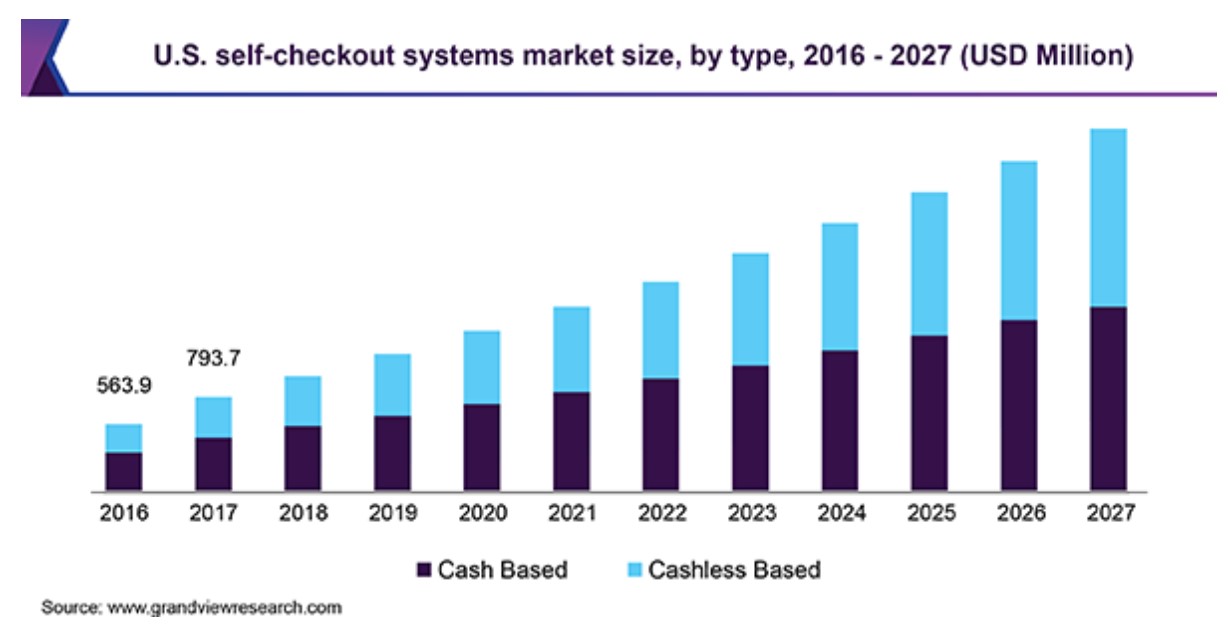
The sector for self-checkout remedies is anticipated to CAGR 13.3% from 2020 to 2027. Currently practically 75% of consumers have made use of self-checkout primarily in grocery.
The pandemic accelerated the adoption of contactless options that avoided individuals. Walmart announced strategies to go entirely self-checkout. Profitable suppliers (those people rising 10% or much more in previous 12 months) are increasing investments in self-checkout at 178% over the subsequent two yrs. Verify out Section 3 on exactly where Amazon is takng self-checkout upcoming.
To start with use of the Net and Individuals Escalating Points
The strategy of a international world-wide-web has been all around for some time. Nikola Tesla contemplated a ‘world wireless technique in the early 1900s, “and visionary thinkers like Paul Otlet and Vannevar Bush conceived of mechanized, searchable storage programs of textbooks and media in the 1930s and 1940s”.
The initially workable protype of the World-wide-web arrived in the late 1960s with the creation of the ARPANET (Sophisticated Research Assignments Company Community) which was initially funded by the United states of america Section of Protection. ARPANET shipped its 1st message in a ‘node-to-node’ communication on October 29, 1969. The basic information was LOGIN, but it crashed the network and only the initial two letters arrived.
Rapid forward to these days and we are now speaking about the ‘Internet-of-Things or IoT’. Predictions are that by 2026, a lot more than 64 billion IoT products will be connected about the world. “Additionally, businesses and people will invest almost $15 trillion on IoT equipment, answers, and supporting devices from 2018 by means of 2026.”
Retail will benefit from the enlargement of the Net-of-Matters.
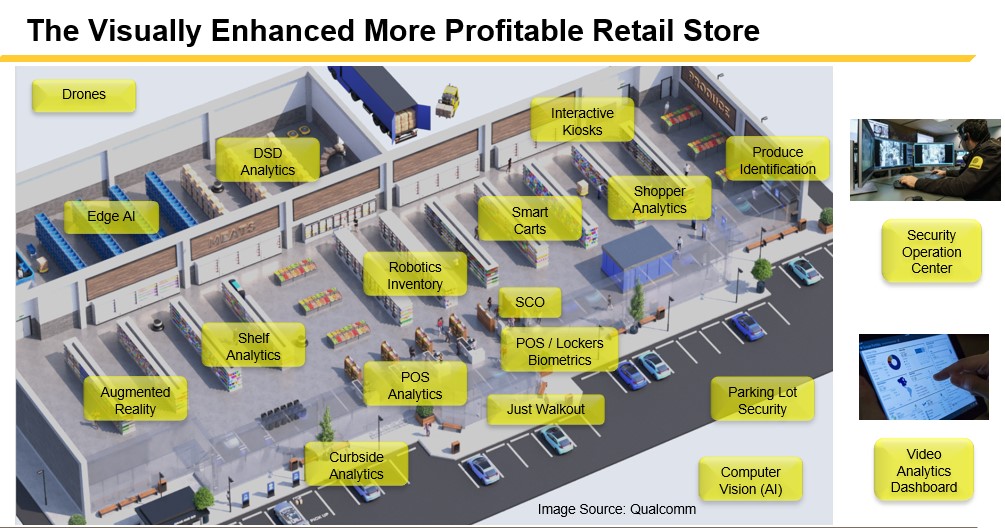
A linked shop will be much more lucrative. Higher than image blends personal computer vision and IoT capabilities into a brighter potential of retail.
[ad_2]
Resource backlink

